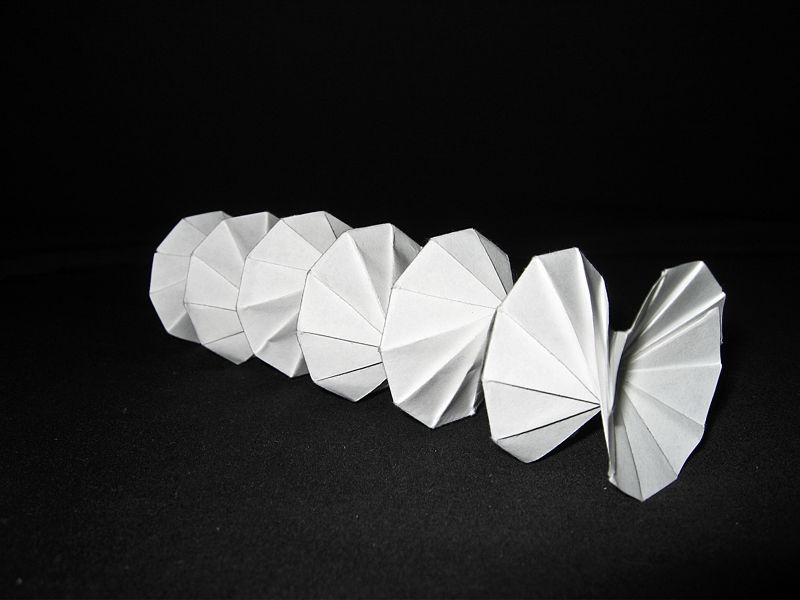There are more and more applications for very small 3D structures, ranging from displays to aerials, but whilst we are very good at making minute 2 dimensional structures the third dimension is much more difficult. The Japanese developed ways of converting the 2D paper to beautiful 3D structures in the art of origami, and more recently mathematicians have formalised the process, but folding structures on the micrometer scale is rather fiddly. There have been some approaches involving liquids and using surface tension, or by adding actuators, but these are constrained or more expensive.
 However Jennie Ryu at the University of Colorado and collegues have come up with a very neat solution. They have developed a process which involves taking a sheet of polymer, stretching it in one direction, and then shining UV light onto areas of the surface which they want to produce a hinge. The polymer is designed to permanently stretch when exposed to the UV, so they end up with the upper layer longer than the under side, meaning that when they stop stretching the sheet, it will want to bend. The sheet is then stretched in other directions, and exposed to form other hinges. When a shape is cut out of the polymer sheet, it is already folded to the correct shape.
However Jennie Ryu at the University of Colorado and collegues have come up with a very neat solution. They have developed a process which involves taking a sheet of polymer, stretching it in one direction, and then shining UV light onto areas of the surface which they want to produce a hinge. The polymer is designed to permanently stretch when exposed to the UV, so they end up with the upper layer longer than the under side, meaning that when they stop stretching the sheet, it will want to bend. The sheet is then stretched in other directions, and exposed to form other hinges. When a shape is cut out of the polymer sheet, it is already folded to the correct shape.
By varying the exposure, they can change the angle the polymer folds to, and by exposing a larger length they can produce a smooth curve rather than a sharp bend.
So far they have folded up a box about 10mm across, but they have developed tools that should allow them to build structures much smaller, which could have interesting structural properties, optical properties, or even make useful scaffolds for growing tissue on.
References
- Previous Satellite Rescue
- Next Cheeky Monkey









Comments
Add a comment